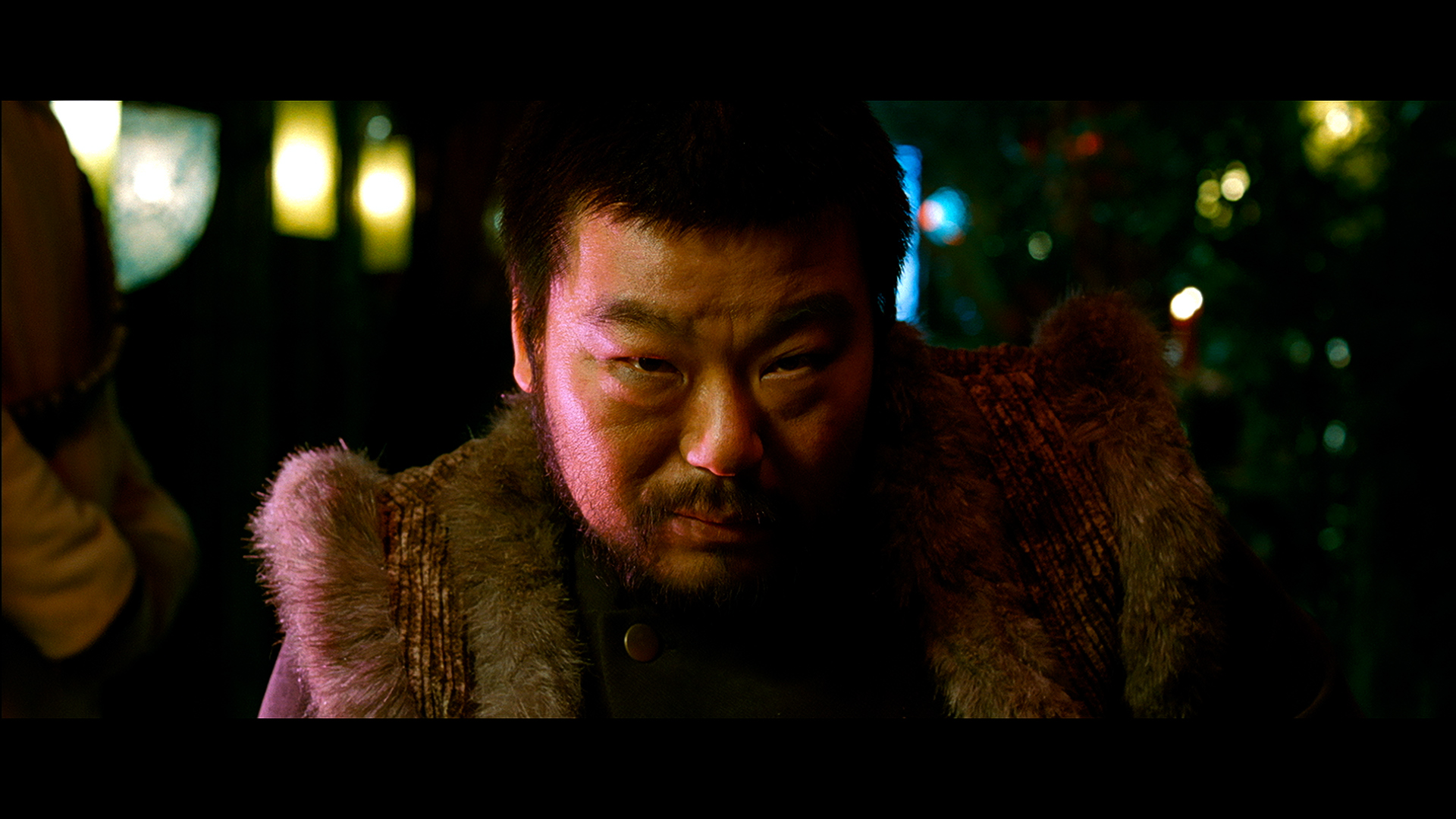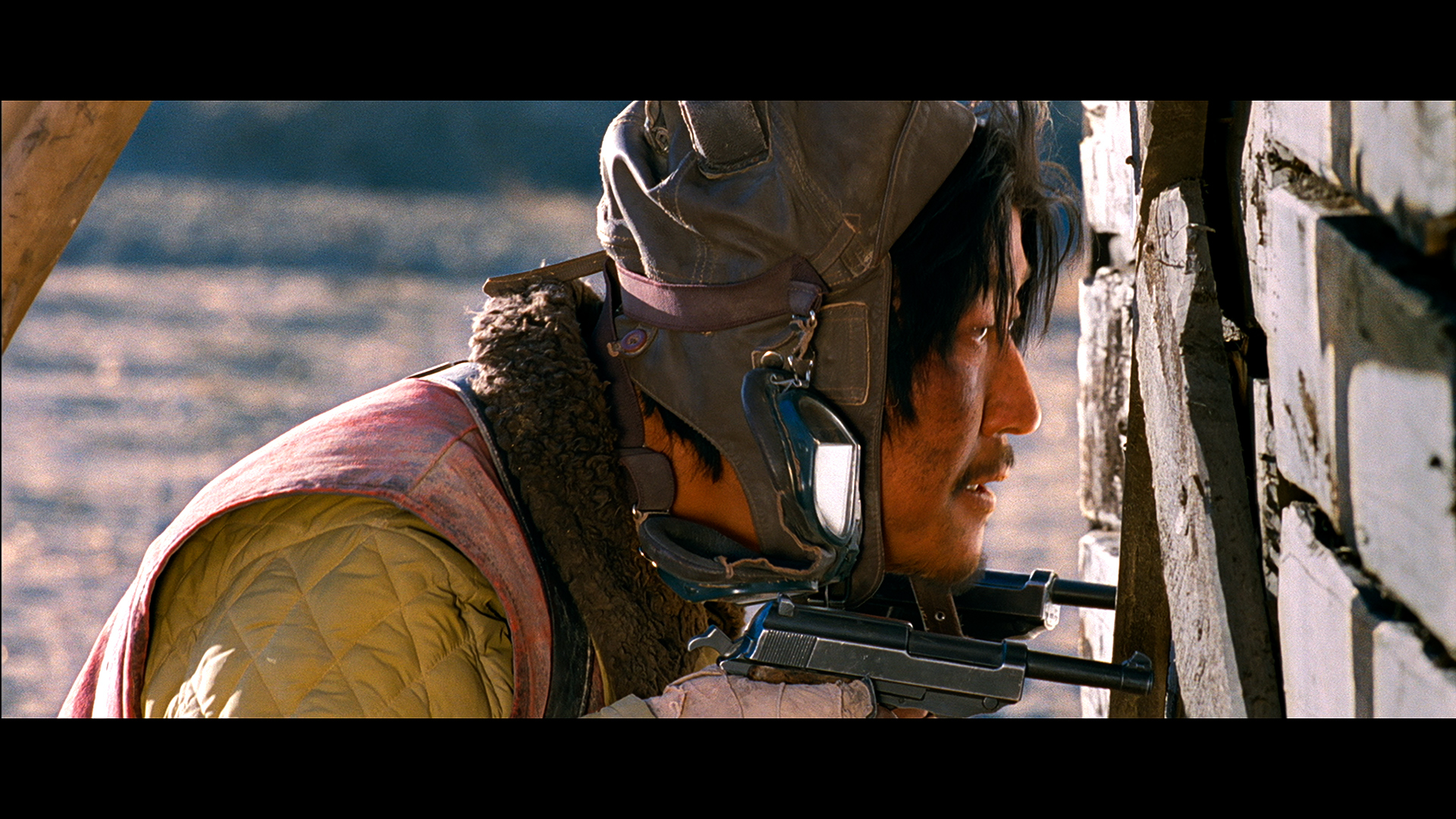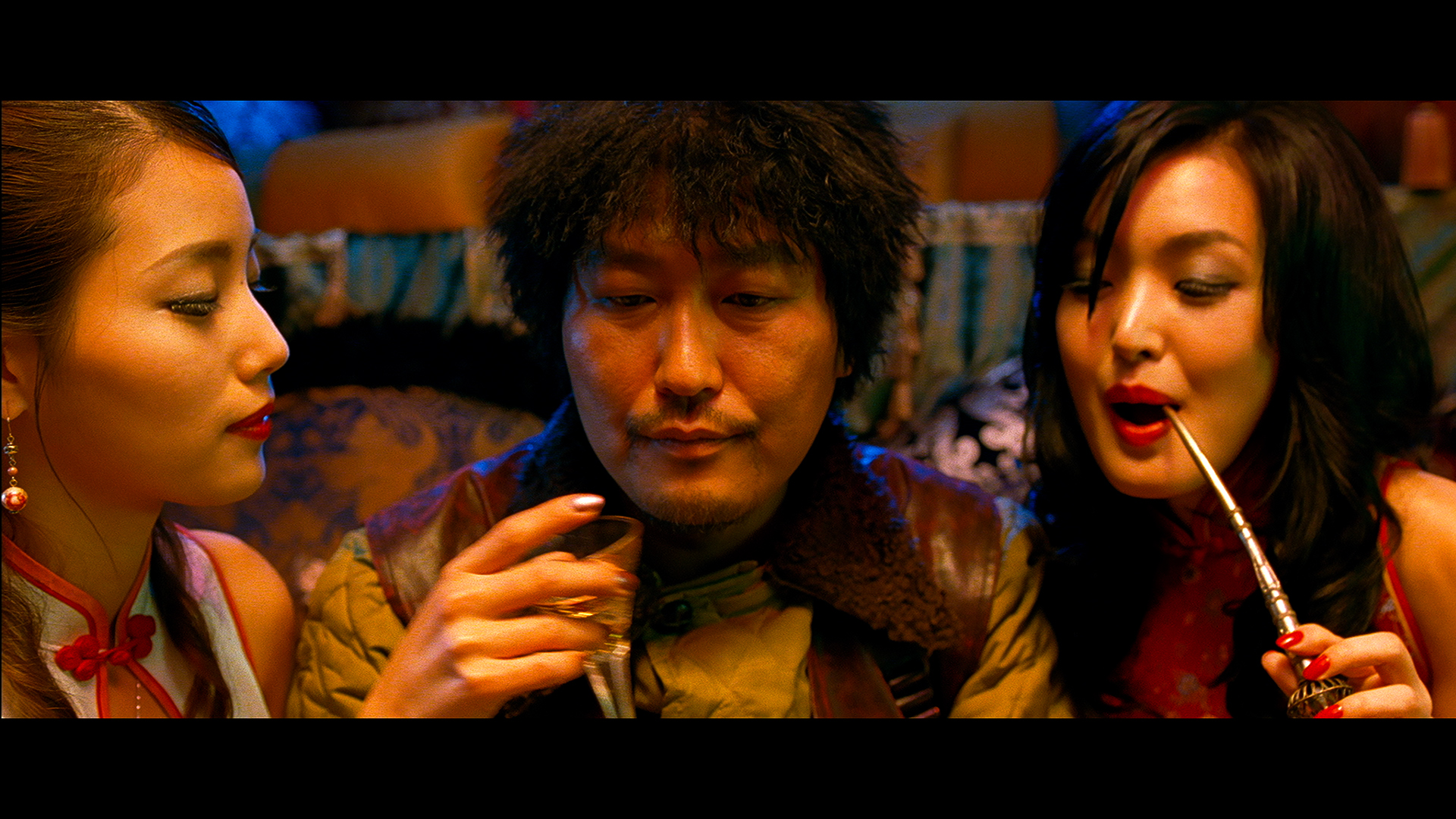



 raucous fresh air in 2008 at the height of the South Korean genre renaissance, The Good, the
raucous fresh air in 2008 at the height of the South Korean genre renaissance, The Good, the  Bad, the Weird was marketing as an instant cult item and pretty much delivered on that front. As you'd expect from the title, it's essentially a variation on the Sergio Leone formula and marked quite a shift for director Kim Jee-woon in between his landmark horror films, A Tale of Two Sisters and I Saw the Devil. Weirdly, it's also the closest thing to his one Hollywood film, 2013's The Last Stand, and since then it's remained a fan favorite with multiple home video options out there.
Bad, the Weird was marketing as an instant cult item and pretty much delivered on that front. As you'd expect from the title, it's essentially a variation on the Sergio Leone formula and marked quite a shift for director Kim Jee-woon in between his landmark horror films, A Tale of Two Sisters and I Saw the Devil. Weirdly, it's also the closest thing to his one Hollywood film, 2013's The Last Stand, and since then it's remained a fan favorite with multiple home video options out there.  to Leone in theory including the obligatory three-guy
to Leone in theory including the obligatory three-guy  showdown sequence and combat scenes with lots of extras scattering across the screen. Visually though it's a totally different beast, tossing aside Leone's formal precision in favor of the more loose, chaotic visual style common at the time complete with some flashy CGI augmentations that don't really spoil things. It's all essentially an action-packed exercise in style for its own sake, but the novelty of the time setting and engaging personalities at its core pull you in for the elaborate treasure hunt at its heart. That quality also helped it make a splash internationally followed its much-touted premiere at Cannes as an in-progress cut that was eventually honed into the familiar international and extended Korean versions we have today. In this case, longer isn't necessarily better; the extra five minutes or so beefing up the independence fighters drags out the resolution of the film quite a bit and slows down the pace significantly. It's worth checking out both versions to see the extra material, but first-time viewers should definitely go with the international cut first.
showdown sequence and combat scenes with lots of extras scattering across the screen. Visually though it's a totally different beast, tossing aside Leone's formal precision in favor of the more loose, chaotic visual style common at the time complete with some flashy CGI augmentations that don't really spoil things. It's all essentially an action-packed exercise in style for its own sake, but the novelty of the time setting and engaging personalities at its core pull you in for the elaborate treasure hunt at its heart. That quality also helped it make a splash internationally followed its much-touted premiere at Cannes as an in-progress cut that was eventually honed into the familiar international and extended Korean versions we have today. In this case, longer isn't necessarily better; the extra five minutes or so beefing up the independence fighters drags out the resolution of the film quite a bit and slows down the pace significantly. It's worth checking out both versions to see the extra material, but first-time viewers should definitely go with the international cut first.  guidelines. In early 2025, Arrow Video brought a very deluxe two-disc limited edition to Blu-ray with a ton of
guidelines. In early 2025, Arrow Video brought a very deluxe two-disc limited edition to Blu-ray with a ton of  special features, followed later in the year by a UHD option (with the second Blu-ray of bonus features included) in both the U.S. and U.K. (The Blu-ray option in America still remains only the IFC as of this writing.) Both the international and Korean cuts are included on the UHD via seamless branching, and the DTS-HD MA 7.1 mix sounds great with lots of immersive sound effects and bombastic music using all of the channels effectively. Optional English subtitles are also included. Anyone who saw the film theatrically probably noticed that it was part of a wave of films (many still continuing today) that were shot on 35mm film but finished as a 2K digital intermediate. The UHD looks substantially better than any option we've had before with an incredible color spectrum and extremely good detail when it comes to actors' faces and hair as well as clothing and other tactile elements. As it did theatrically, the film looks rougher in some of the bright outdoor shots when the now-dated nature of the source kicks in which introduces some baked-in haloing around hair and clothing in medium shots. It's undoubtedly the best the film could look, so bear that in mind while watching. Unlike the U.K. UHD, the U.S. one is also completely uncut.
special features, followed later in the year by a UHD option (with the second Blu-ray of bonus features included) in both the U.S. and U.K. (The Blu-ray option in America still remains only the IFC as of this writing.) Both the international and Korean cuts are included on the UHD via seamless branching, and the DTS-HD MA 7.1 mix sounds great with lots of immersive sound effects and bombastic music using all of the channels effectively. Optional English subtitles are also included. Anyone who saw the film theatrically probably noticed that it was part of a wave of films (many still continuing today) that were shot on 35mm film but finished as a 2K digital intermediate. The UHD looks substantially better than any option we've had before with an incredible color spectrum and extremely good detail when it comes to actors' faces and hair as well as clothing and other tactile elements. As it did theatrically, the film looks rougher in some of the bright outdoor shots when the now-dated nature of the source kicks in which introduces some baked-in haloing around hair and clothing in medium shots. It's undoubtedly the best the film could look, so bear that in mind while watching. Unlike the U.K. UHD, the U.S. one is also completely uncut.  actors, the ties to Leone, and plenty more. That track was recorded for the international cut, which also ports over the fun
actors, the ties to Leone, and plenty more. That track was recorded for the international cut, which also ports over the fun  archival commentary with the director and three leads. The Korean cut features an archival track for the film's domestic release featuring the director, cinematographer Lee Mogae, lighting director Oh Seung-chul, and art director Cho Hwa-sun going into the technical nuts and bolts of putting the film together.
archival commentary with the director and three leads. The Korean cut features an archival track for the film's domestic release featuring the director, cinematographer Lee Mogae, lighting director Oh Seung-chul, and art director Cho Hwa-sun going into the technical nuts and bolts of putting the film together. director and cast (18m55s), an
director and cast (18m55s), an  "Analogue" featurette (13m36s) on the cinematography, lighting, and stunts, a "Space" featurette (10m29s) on the production design, a "Sound" featurette (10m56s) on the sound design, a movie-to-storyboards comparison (14m15s), a shorter behind-the-scenes featurette (15m3s), two EPK-style making-ofs (3m23s and 1m3s), short interviews with Jee-woon (3m15s), Kang-ho (2m42s), Byung-hun (2m58s), and Woo-sung (2m47s), a Cannes highlight reel (3m2s), a hefty reel of deleted scenes (43m55s) with optional commentary, an alternate 47s scene with commentary, five alternate endings, four trailers (Korean, international, U.S., and U.K.), and an 82-image photo gallery. The set comes with a double-sided fold-out poster with new artwork by Nathanael Marsh (also on the reversible sleeve option with the original poster), three postcard-sized artcards, and a book with essays by Darcy Paquet, Kyu Hyun Kim, Cho Jae-whee, and Ariel Schudson.
"Analogue" featurette (13m36s) on the cinematography, lighting, and stunts, a "Space" featurette (10m29s) on the production design, a "Sound" featurette (10m56s) on the sound design, a movie-to-storyboards comparison (14m15s), a shorter behind-the-scenes featurette (15m3s), two EPK-style making-ofs (3m23s and 1m3s), short interviews with Jee-woon (3m15s), Kang-ho (2m42s), Byung-hun (2m58s), and Woo-sung (2m47s), a Cannes highlight reel (3m2s), a hefty reel of deleted scenes (43m55s) with optional commentary, an alternate 47s scene with commentary, five alternate endings, four trailers (Korean, international, U.S., and U.K.), and an 82-image photo gallery. The set comes with a double-sided fold-out poster with new artwork by Nathanael Marsh (also on the reversible sleeve option with the original poster), three postcard-sized artcards, and a book with essays by Darcy Paquet, Kyu Hyun Kim, Cho Jae-whee, and Ariel Schudson.![]()